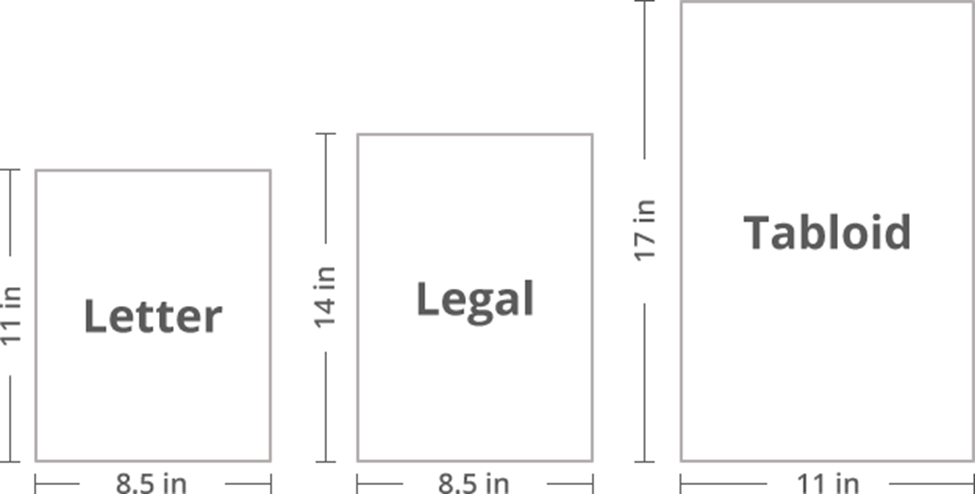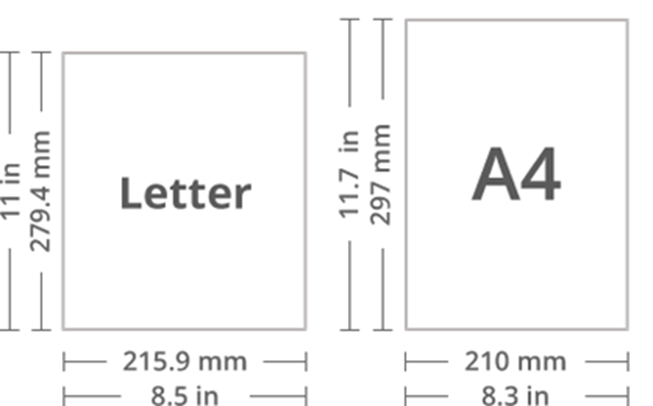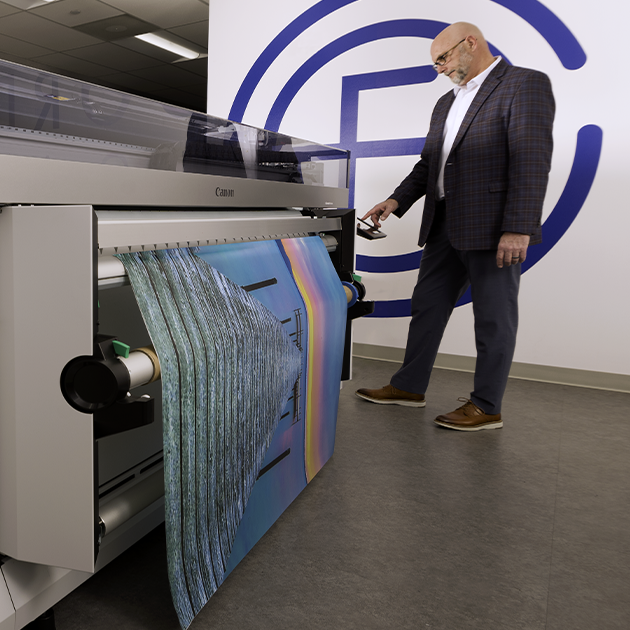Have you ever looked at a box of printer paper and wondered what all the numbers mean? Are terms like A5, A4 or Tabloid confusing, and what’s the difference between them anyway?
Let’s dive in to demystify and simplify the confusing world of paper sizes and cover the following topics:
- What is standard paper size?
- Traditional North American paper sizes
- How were standard paper sizes determined?
- How to print A4 documents
- What size paper do printers use?
What is Standard Paper Size?
There are two main paper size standards in use today: the international and North American systems. The international system, known as the ISO 216 standard, is globally recognized, but it is different from the size paper most commonly used in the United States and Canada, which use the North American system.
The most common paper sizes in the United States are:
- Letter (8.5 × 11 inches) — the standard for everyday office print-outs and academic documents
- Legal (8.5 × 14 inches) — often used for contracts and legal documents, hence the name
- Tabloid (11 × 17 inches) — commonly used to make tabloids, newsletters or smaller sized newspapers
Traditional North American Paper Sizes
The North American standard has established formats and aspect ratios. Below are a helpful chart and graphics summarizing the range of paper sizes that are most widely used in the United States.
|
Format
|
Size in Inches
|
Size in Millimeters
|
|
Letter
|
8.5 x 11
|
216 x 279
|
|
Legal
|
8.5 x 14
|
216 x 356
|
|
Tabloid (Ledger)
|
11 x 17
|
279 x 432
|


How Were Standard Paper Sizes Determined?
Historical precedent and practicality have a lot to do with today’s common paper measurements. The ISO 216 standard was established in 1975 and is used for international letterhead size A4, which measures 8.25 x 11.75 inches, or 210 x 297 mm.
In the United States, however, the standard Letter (8.5 x 11) size has been used for centuries. But we could have ended up with a different standard if President Hoover had his way in the early 1930s. He insisted that all government forms and documents be printed at 8 x 10.5 inches. It wasn’t until President Reagan came into office in the early 1980s that he switched all government documents to the standard 8.5 x 11 Letter size used by most other institutions.
Finally, in 1995, the American National Standards Institute’s (ANSI) ANSI/ASME Y14.1 standard made it official. They standardized various U.S. paper sizes for engineering drawings, including the use of 8.5 x 11 paper.
So, if you’ve been wondering if regular copy paper used in the U.S. is the same as A4, they’re not. Below is a visual showing the size difference between the international standard (A4) and the North American standard letterhead.

How to Print A4 Documents
You’ll notice that the international paper size is similar to the US standard Letter dimension. Even so, problems can arise when trying to print documents that are received from another country that uses A4 paper. For example, if you have a colleague in Germany who emails you a PDF scaled to A4 dimensions and you try to print it on your office printer, the document could be cut off on the top and bottom.
Overcoming this problem is relatively simple. Because A4 documents are 6% taller than standard Letter size, you’ll need to set your magnification to 94% to ensure the entire document fits on the printed page. If you’re sending a standard Letter document to an international recipient, consider letting them know that they should print it at 97% magnification since the A4 is 3% narrower than standard Letter size.
What Size Paper Do Printers Use?
Most copy machines in the United States are preset to print on a standard letter 8.5 x 11 sheet of paper with options for switching to legal or tabloid with the click of a button or mouse.
Just as important as using the right-sized paper is using a good quality copy paper. Cheap paper often produces extra lint and is more prone to paper jams. In other words, don’t skimp on your paper, and your printer will thank you for it.
Our print experts are happy to help you with all of your print questions and can help you optimize your print environment. Learn more about our Managed Print Services in our FAQ infographic below. And if you’d like to learn more about which printing paper you need for your organization’s needs or other ways to maximize your print environment, reach out to the print experts at Gordon Flesch Company.













